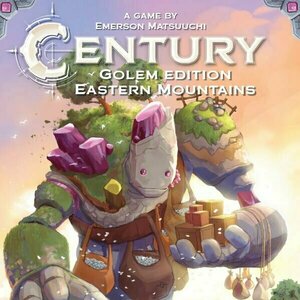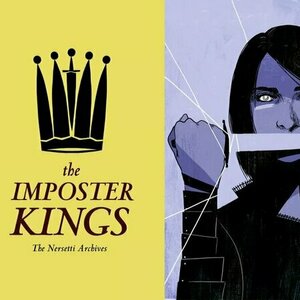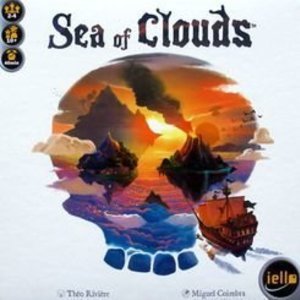Purple Phoenix Games (2266 KP) rated Century Golem: Eastern Mountains in Tabletop Games
Apr 21, 2021
The second game in the Century: Golem Edition trilogy is Century: Golem Edition – Eastern Mountains (referred to as just Eastern Mountains for the rest of this review). Players return to their roles as crystal traders, mining and trading crystals. You’ve achieved success in your home village, but now have decided to venture out into the mountains of Carvania, in hopes of creating a vast network of trade throughout the land.
Disclaimer: Eastern Mountains is a standalone game, but also comes with a ruleset for The Call For Adventure – with which you can integrate both Century: Golem Edition AND Eastern Mountains into one big game. This review is of Eastern Mountains only and does not delve into the gameplay for The Call For Adventure. When we add that additional content to Eastern Mountains, we will either amend this review or write a new post altogether! -L
Eastern Mountains is a game of point-to-point movement with a modular board in which players are mining/trading crystals to fulfill Village requirements and receive end-game VPs. Set up the game tiles as described in the rules, and each player receives a player board, wagon, and outposts in their chosen color. From the starting crystal options, players select and add their starting crystals to their player boards, place their wagon on any mountain tile, and the game is ready to begin!
Played over a series of rounds, players take turns moving their wagon and performing one action. To begin a turn, you may move your wagon to an adjacent tile for free. You can always choose not to move on your turn if you wish! If you want to move more than 1 mountain tile, you may do so, but you must place a single crystal from your player board onto each tile you leave. As long as you have crystals to pay, you can continue movement. If you end your movement on a tile with another wagon, you must pay each other wagon owner 1 crystal from your board. After you are done moving your wagon (or not moving), you may perform one of the following actions: Trade, Village, or Mine.
To perform the Trade action, you must first have an outpost on that tile. The cost to build an outpost varies by player count and number of outposts already on that tile. Outposts are paid for with crystals from your board. You then take the leftmost outpost from your board in the row that matches the trade symbol on the mountain tile, and place it on that tile. When building an outpost, if you empty a vertical column on your board, you may immediately choose a bonus tile to use for the remainder of the game. Once you have an outpost on a mountain tile, you may perform the Trade action. To Trade, exchange the crystal(s) listed above the arrow for those listed below the arrow. You may perform the Trade action as many times as long as you have the appropriate crystals to exchange.
Village tiles, placed on the four corners of the ‘board,’ each have 1 face-up VP tile atop them. If you move your wagon to a Village tile, and you have the appropriate crystals shown on that VP tile, you may perform the Village action by returning those crystals to the supply and claiming that VP tile. Draw a new VP tile to place on the village, and your turn is over. To perform the Mine action, you simply take 2 yellow crystals from the supply. This action can be performed from any tile. The end of the game is triggered once a player has claimed their 4th VP tile. The round ends as normal, and then VPs are tallied. You earn VPs from VP tiles, some bonus tiles, and for uncovered outpost spaces on your player board. The player with the most VP is the winner!
So, for pre-ordering Eastern Mountains blindly, with no intel about it at all, I am happy to report that it did not disappoint! Eastern Mountains takes everything I love about Century: Golem Edition and takes it to the next level. Let’s dive into strategy first. Eastern Mountains takes the strategic element of trading/upgrading crystals to the next level by adding a modular board. Instead of drafting cards to your hand, you have to physically move your wagon across the tiles to perform those chosen trades. And since you can only move 1 tile for free, you really have to strategize how to manipulate your crystals in the fastest ways possible to fulfill the Village tile VPs. Can you find a combination of tiles that can churn crystals out for you? Or are they scattered across the board, thus forcing you to adjust strategy to gain new crystals? With the modular board and random tile setup, every game is going to be different, and will require a different strategy for success.
The other strategic element that I love in Eastern Mountains is that all information is known by all players. You know what crystals (and how many) your opponents have, you know the trade powers in play, you can see where your opponent has built outposts, and you can see the VP requirements on the Village tiles. Obviously, you can’t read your opponents’ minds, but all of this public information could give you a glimpse into their strategy. And that could affect your strategy as well! You’re always thinking in this game, and I love that.
Moving on to components – high quality stuff! All of the mountain tiles are thick and sturdy cardboard, the wagon and outpost meeples are chunky and easy to handle, and of course the crystals are beautiful and fun to play with! One thing that really drew me to Century: Golem Edition was the colorful and awesome artwork. In Eastern Mountains, that artwork really doesn’t shine through as much. The theme is still there, but not as evident as in the first game. Overall, though, still a colorful and pretty game!
Plan B Games absolutely hit the mark with Eastern Mountains. It is extremely strategic, engaging, and entertaining. A highlight is the fact that it has a modular board. The setup possibilities are endless, and replayability is no concern for this game. Eastern Mountains is a wonderful sequel to Century: Golem Edition, and it was definitely a great investment for me. If you enjoy Century: Golem Edition, I highly recommend that you give Eastern Mountains a try. It might surprise you! Purple Phoenix Games gives Century: Golem Edition – Eastern Mountains an 11 / 12.
Purple Phoenix Games (2266 KP) rated Tiny Epic Mechs in Tabletop Games
Jun 30, 2021
Disclaimer: I do not intend to rehash the entire rulebook in this review, but give a general overview of turns and gameplay. For a more in-depth look at the rules, pick up a copy of the game from the publisher or your FLGS! -L
Tiny Epic Mechs is a game of action programming in which players take on the roles of Mech pilots competing in an arena-style battle royale event. Through the purchase of new weapons, powering up into Mech suits, combat with opponents (either face-to-face, or through the deployment of mines and turrets), and controlling different zones of the arena, players are trying to earn the most Victory Points by the end of 6 rounds of play. To begin, follow the setup instructions for the arena, based on the player count. Each player receives a player card (to track resources, and also acts as a reference card), a Pilot card, components in their chosen player color, and 1 Basic Weapon card to equip on their Pilot. Set the Round Tracker to round 1, create a market row of Advanced Weapons, place the Mighty Mech suit on it’s corresponding zone card, and the game is ready to begin!
Each round consists of 3 phases: Program, Execution, and Scoring. During the Program phase, players will secretly choose 4 Program Cards from their hand to represent their 4 moves/actions for this round. The chosen Program Cards will be laid out in order above the player card, and will immediately be covered by a face-down unused Program Card. (There are 8 Program Cards total, only 4 of which are used each round). It is important to note that the orientation of the Program Cards matters – Program Cards must be played parallel to the zone cards of the arena. Since they dictate the directions in which you move, you must place them exactly as you want to move. During the second phase, Execution, players will take turns revealing their Program Cards, one at a time and in order, and resolving the actions. To Execute a Program Card, you will first move your Pilot in the direction of the card’s arrow, and then resolve the action listed on the card. Movement is a must and cannot be skipped.
After Movement, you may perform the action on your card – Collect Resources, Purchase a Weapon, Deploy a Mine or a Turret, or Power Up. The first three of these are pretty self-explanatory. The Power Up action allows your Pilot to either heal themselves or upgrade into a Mech suit. Now to discuss crux of the game – combat. During the Execution phase, if you enter into the same zone as another player, you must immediately begin Combat. You will use your equipped weapons to battle your opponent, in hopes of knocking them out or forcing them to retreat. Weapons will deal base damage, or Power Attack damage, based on the circumstances of the combat. To attack with a weapon, you will deal the base damage immediately to your opponent. After your attack, the weapon you used is Exhausted and cannot be used again this combat. Your opponent then has the chance to attack back – either regularly or via Power Attack (I’ll leave that for you to discover on your own). Combat continues, alternating between players, until either a player is KO’d, or is forced to retreat because all of their weapons have been Exhausted. Initiating combat, dealing damage, and defeating your opponent all earn you VP, so combat is a vital part of the game!
After all players have revealed and performed their final Program Card, the round ends. At the end of the 2nd, 4th, and 6th round, players will perform a Scoring phase, earning points for any zones occupied by their own mines, turrets, or Pilot. At the end of the 6th and final round, scoring takes place as stated above, but players will also earn VP for all weapons they have purchased throughout the game. The player with the highest VP is the winner!
I have to admit that I am not a person who generally enjoys the mechanic of action programming. I like to really think through my strategy, and execute it exactly as I want. Action programming makes strategizing more difficult because your success or failure depends on the actions selected in advance by your opponents. You can’t really adapt mid-round, you kind of just have to deal with what’s happening. That being said, Tiny Epic Mechs, in my opinion, has a good balance of combat and actions/resource management. Your entire strategy can’t be based on combat – you need to upgrade weapons, climb into your Mech suit, etc. – and the ability to vary combat with individual upgrades makes the gameplay feel more strategic. Yes, your opponents might still mess up some of your best-laid plans, but you have to be prepared for any situation.
The overall gameplay can feel calculated or chaotic simply based on the player count. In a 2-player game, obviously there are only 2 people, and you have more opportunities to really focus on your individual Pilot before necessarily traipsing into combat. In a game with 3 or 4 players, interactions between players are inevitable and can really make the action programming mechanic stand out/feel more random/etc. Especially with a small play arena, Pilots will be crossing paths at probably every turn, and you may be forced into more combats that you anticipated. With only 2 players, there are interactions between players, but it feels a little more calm overall, and you can really work with a strategy instead of having to adapt to sudden changes in the arena.
Let’s touch on components for a minute. As always, this Tiny Epic delivers on quality components. The cards are colorful and sturdy, the text easy to read. The wooden components for tracking health/resources are good, but maybe just a little too small, even for my regularly-sized hands. The ITEMeeples, Mech suits, and weapons are always fun to play with, and sturdy enough to hold up to lots of plays. All in all, great work from Gamelyn Games once again.
For being a game of action programming, I have to admit that I enjoyed Tiny Epic Mechs more than I thought I would. At least at a 2-player count. Anything more feels too chaotic and random to me. The elements of programming and combat are engaging and elevate the gameplay, but it’s just not my favorite mechanic. Will I keep this game? Definitely. For what it is, I think it does a good job. Will I get more action programming games in the future? Probably not. I’d say Tiny Epic Mechs fills that spot for me, and that is all good in my book. Check this one out if you’re looking for something fun and relatively simple that utilizes this mechanic. Purple Phoenix Games gives it a mechanical 7 / 12.
Purple Phoenix Games (2266 KP) rated The Imposter Kings in Tabletop Games
May 1, 2021
DISCLAIMER: We were provided a copy of this game for the purposes of this review. This is a retail copy of the game, so what you see in these photos is exactly what would be received in your box. I do not intend to cover every single rule included in the rulebook, but will describe the overall game flow and major rule set so that our readers may get a sense of how the game plays. For more in depth rules, you may purchase a copy online or from your FLGS. -L
The Imposter Kings is a card game for 2-4 players in which players are attempting to gain and maintain control of the throne, accumulating a total of 7 points to win the game. There are some slight rules variations between 2-, 3-, and 4-player games, but the overall gameplay is the same. This review will focus on the 2-player rules. To setup for the game, assemble the deck as described in the rules for your chosen player count. In a 2-player game, the deck is comprised of 18 cards. Each player is given a King card, and one player’s will be the True King. The True King merely determines the first player for the round. Shuffle the deck and deal 8 cards to each player. There will be 2 cards leftover, and those will go into the center of the play area, one face-up and one face-down. This lets the players know which card is not in either players hand, as well as a random unknown card in neither players’ hand. Each player will select a card from their hand to be their Successor, and will place it face-down next to their King, and they will also select one card from their hand to discard face-down. The game is now ready to begin!
On your turn, you will play any card from your hand to the Court (play area) that is of an equal or higher value than the card played previously. The last-played card to the Court is considered to be on the Throne. All cards in Imposter Kings are numbered 1-9, and each card has an associated special ability. Once you play a card to the Court, you may/must use the ability (if optional/mandatory). These special abilities can alter the Court and gameplay by Disgracing cards (flipping them face-down to ‘reset’ the number line), swapping cards with other players, playing a lower-numbered card on top of a higher number etc. The round continues in this fashion, with players alternating, until one player is no longer able to play a card to the Court. That player loses the round, and the winning player receives a number of points, depending on certain aspects. The deck is reshuffled, the True King is passed to the loser of the round, and a new round commences. The first player to reach 7 points is the ultimate winner!
That details the basics of the gameplay, but there are a few special things to keep in mind. Certain cards will force players to play a card to their Antechamber – face-up in front of them. If ever you have a card in your Antechamber at the beginning of a turn, you must play it to the Court, regardless of its value. This can be a good strategic way to trap your opponent into playing a specific card on their next turn! Sometimes a card will need to be Condemned – it is then placed face-down in front of you, and then removed from play on your next turn. Another good way to eat up an opponent’s turn! If you ever get to a point in the round when you are unable to play a card to the Court, you may choose to use your King power – it allows you to flip your King over to Disgrace the card currently on the Throne, and take your Successor into your hand (hopefully giving you a chance to keep playing in the round!). However, there is an Assassin card in the game!! If you have the Assassin, you can reveal it when your opponent decides to use their King – thus assassinating them and immediately winning the round. Lots of tricksy ways to make sure you end up on the Throne!
So all in all, how does The Imposter Kings hold up? Fairly well, actually. For being a simple and relatively fast card game, there is a lot of strategy required for success. You have to decide which cards/powers to use when, while also trying to deduce what your opponent has in their hand. Can you trap them and force the round to end? Or have they kept a dark horse in hand for just this situation? There is a lot more to The Imposter Kings than meets the eye, and that makes it a fun challenge. The first time I played this game, it reminded me of a similar game by ButtonShy titled Hierarchy. The concept and gameplay are similar, but the biggest difference is that The Imposter Kings can be played with 3 and 4 players. That adds another element of strategy/chaos to the game, as there are more cards to deduce, more opportunities for the Court to change between your turns, and just more strategy in general. Hierarchy is strictly a 2-player game, but The Imposter Kings allows you to play with more people. With higher player counts, new and unique cards are added to the starting deck, offering even more abilities and strategic options for play. The gameplay scales with player count, and that keeps it engaging.
Let me touch on components for a minute. This is a retail version of the game, and the production quality is very nice! The game comes in a nice small box, and the deck of cards is sturdy in hand. The artwork is interesting, the text is clear, and the cards are color-coded based on their value. The coloring really helps with quick visual identification of what cards are in play. The game also comes with some reference cards for the various abilities, and those were much appreciated. The rulebook had a couple of areas of ambiguity, but watching the videos on the BGG page for The Imposter Kings helped answer any questions I might have had. All in all, good production quality!
So as you can probably tell from this review, I generally like The Imposter Kings. The gameplay is strategic, engaging, and its 3-4 player variants offer some unique twists that the 2-player just cannot handle. This is a game that I can see myself bringing out when I have newer gamers at my table. The gameplay is simple, yet strategic, and it is not overwhelming to learn or play. It definitely makes players think, and even now I’m thinking about what strategy I might try next game. If you are looking for something relatively simple, yet surprisingly strategic, consider checking out The Imposter Kings. Purple Phoenix Games gives it a royal 8 / 12.
Purple Phoenix Games (2266 KP) rated Sea of Clouds in Tabletop Games
Sep 5, 2019 (Updated Jul 1, 2020)
In Sea of Clouds, players are Captains of mighty air pirate ships. That’s right – flying pirate ships! Just like the pirate days of yore, your goal is to recruit the best crew, plunder for treasure and relics, and find the best rum along the way. But be careful because your rival pirate Captains have their eyes on the same prize – so make sure you’ve got a way to outsmart them and sail your way to victory!
Sea of Clouds is a game of card drafting, set collection, and push your luck in which players are trying to amass the most end-game victory points. Played over a series of rounds, players take turns drafting cards, performing bonus actions, and engaging in combat with their neighboring Captains. To setup, each player takes their chosen Captain board, the central board is placed in the middle of all players, and 1 loot card is placed face-down on each of the 3 loot spaces on the central board. The remaining cards are shuffled and create a draw pile. Now you are ready to play!
Each round consists of divvying up shares of loot between all players. On your turn, you will take the face-down card(s) in the #1 loot spot and look at them secretly. Decide whether you want to take the share, or leave it and look at the next one. If you decide to keep the card(s), add them directly around your Captain board in their corresponding spaces. If you decided to leave the share, add 1 card from the top of the draw pile to that share, and then look secretly at the cards in the #2 loot spot. Proceed in the same manner as before with the cards in the #2 and #3 loot spots, if necessary. If none of the shares catch your fancy, draw 1 card from the top of the draw deck to add to your ship. Play continues to the left, and once everyone has had their turn, move the round marker ahead on the central board, and continue on to the next round in the same fashion. At the end of certain rounds of the game, following the divvying of shares, there will be a boarding/combat turn – players will compare the combat strength of their crew (recruited during the divvying of shares) to that of their neighboring Captains. If your crew’s strength is greater than your neighbor, resolve any rewards/effects on your pirate cards. If your strength is less than your neighbor, you lose the combat and do not collect any rewards. Once all combats have been resolved, everyone discards all their crew cards, and the next round begins. At the end of the game, players count up their victory points, and the player who has amassed the most is the winner!
I’m going to get right to the spoilers and say that I love Sea of Clouds. It has some of my favorite mechanics (set collection and card drafting) and it is easy to teach, learn, and play. Do not let the simplicity of play fool you, however, because strategy is definitely a key to victory. One thing that takes this strategy to the next level for me is that there will be times when all players know what cards are in each share of loot. You’ve got to pay attention to which shares your opponents are taking, and figure out a way to stop them from collecting complete sets, or try to force them to collect a share they may not necessarily want. Also, as shares go unclaimed, they get more cards (and eventually money) added to them, so you have to weigh the risks of collecting a share because of one specific card, even though there may be a ‘bad’ card in that share for you. You always have to be adjusting your strategy based on what cards show up in each share, so there is no idle time for any player in this game.
Another neat thing I like about the strategy of this game is that all the cards have backs based on their card type. So all Relic cards have the same back, all Crew cards have the same back, etc. Even though you may not know what is on the other side of the card, you might just take a chance on a share of loot because it has the card types you are trying to get. That’s where the push your luck comes in, because until you look at a share of loot, you aren’t sure if that card is the one you need. Maybe share #1 has a couple cards you could use, but share #2 has a relic card that could be the final one in your set! Are you willing to risk passing up a decent share of loot to see if the next share has what you need? Or maybe the top of the draw deck has the card type you want – would you pass up all 3 shares of loot for one blindly draw card in hopes that it is to your benefit? There is no single ‘right’ way to play, and that is what makes this fun.
The only drawbacks of this game for me are the boarding/combat turns. I like the idea of this player interaction, but it doesn’t always work fairly in my opinion. At the end of each boarding/combat turn, all players discard all of their Crew cards, and you have until the next boarding phase to recruit a new crew. And sometimes, just based on the luck of the draw, you just never get the opportunity to hire anybody. Maybe your opponent takes the share with a Crew member before you get a chance to, or maybe the deck just isn’t evenly shuffled enough to get enough Crew cards out into the playing field. So if you have no Crew, you automatically lose the combat, and that can be detrimental to your strategy – opponents could steal or discard some of your cards, and cause you to lose end-game points. Maybe if there was a draw pile where you could pay a certain amount of gold to hire a Crew member, that would make the game feel a little more fair in the combat department. But ultimately, you’re at the mercy of the luck of the shuffle/draw, and sometimes it just doesn’t balance out.
All in all, I think Sea of Clouds is a great game. It’s a relatively simple game, but one that still requires strategic thought. The push your luck element feels unique in this game because you don’t really lose anything if your luck runs out, you just don’t necessarily get as far as you wanted. The game itself is pretty to look at – the artwork is very well-done and the colors really pop and draw the eye to the cards. This may not be in my Top 10 of favorite games, but it’s one that I will definitely be keeping in my collection. Take a chance on this one if you haven’t so far – it might surprise you. Purple Phoenix Games gives Sea of Clouds a high-flying 12 / 18.

Toy Defense Fantasy
Games, Entertainment and Stickers
App
Toy Defense Fantasy 2.0 will please fans of tower defence genre with excellent graphics,...

Best Guide for Clash Royale - Deck Builder & Tips
Reference and Games
App
"Best guide for Clash Royale" is the reference guide for all fans of Clash Royale including the most...
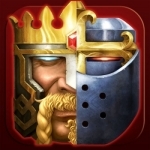
Clash of Kings - CoK
Games and Entertainment
App
Battle against rival clans, strike down enemies with real time strategy and build an empire in CoK,...
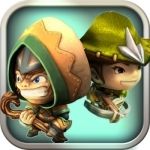
Fantashooting
Games and Entertainment
App
No. 1 iPhone game in Hong Kong, No. 1 iPhone game in Taiwan, No. 1 iPhone game in Singapore, No. 1...

Pantheon: jewel matching puzzle
Games and Entertainment
App
Pantheon is a mysterious and hidden temple in the heart of India. It holds the secrets of ancient...
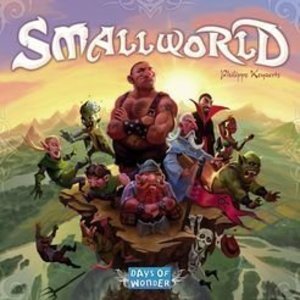
Small World
Tabletop Game
In Small World, players vie for conquest and control of a world that is simply too small to...
Boardgames BetterThanRisk DaysofWonderGames
